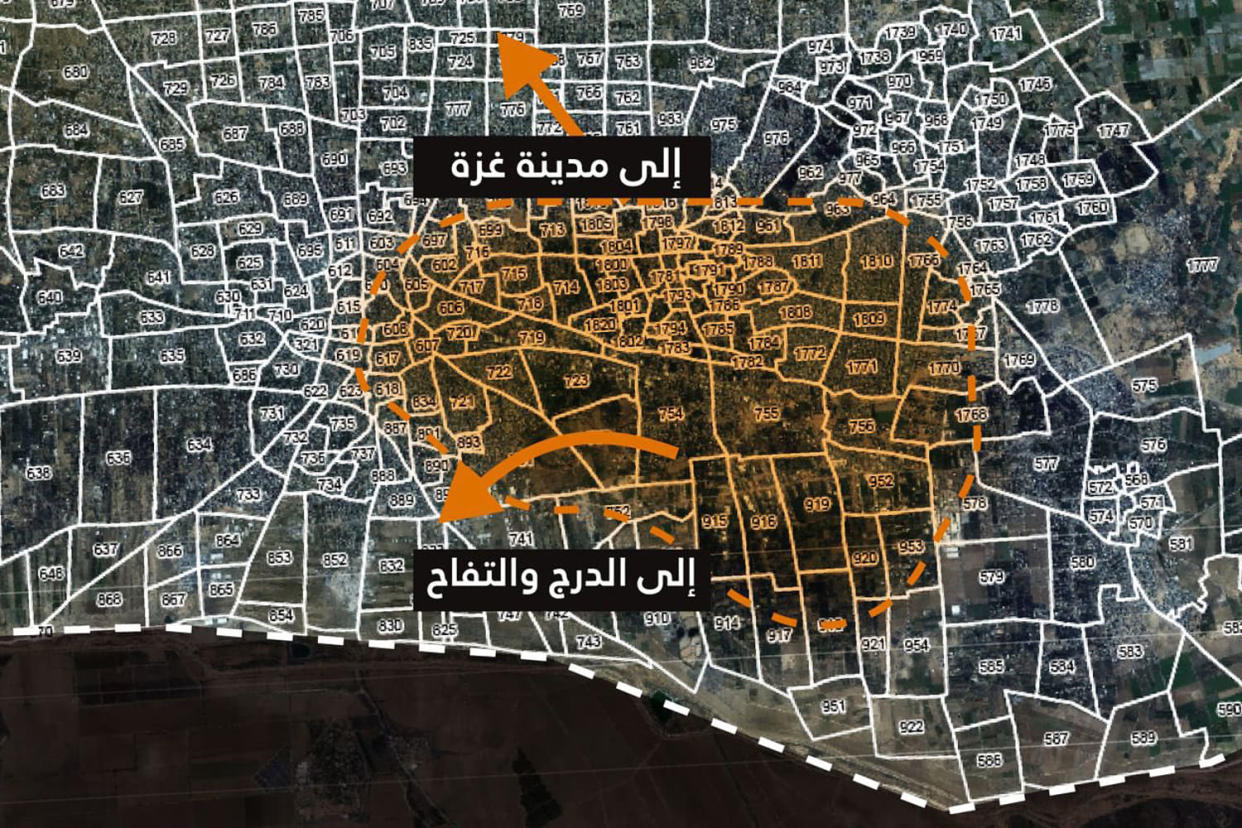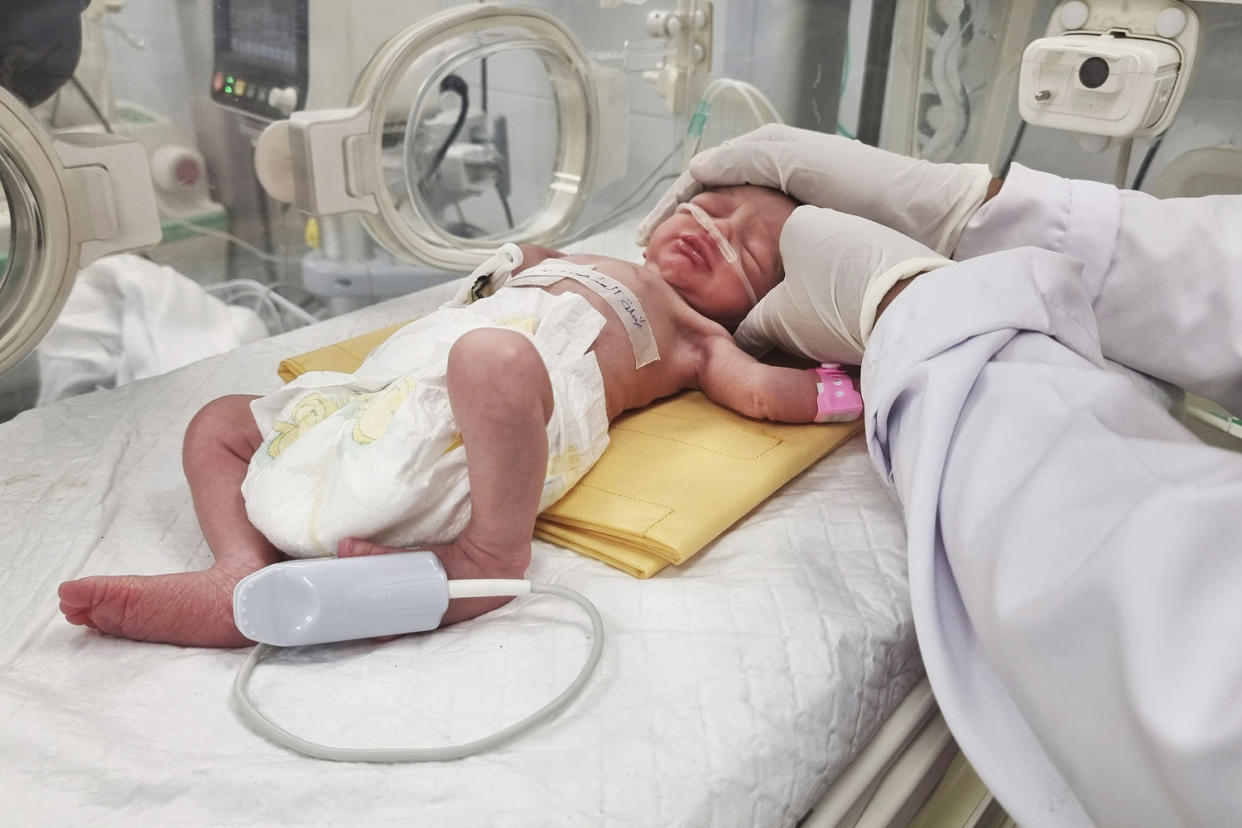Israel bombed areas it told Palestinians were safe, NBC News investigation shows
TEL AVIV — An NBC News investigation into seven deadly airstrikes has found Palestinians were killed in areas of southern Gaza that the Israeli military had explicitly designated as safe zones.
The attacks took place from January to April, as Israel’s military bombarded Rafah from the air and Prime Minister Benjamin Netanyahu’s government signaled its intent to launch a full-scale ground invasion on Gaza’s southernmost city, which has now swelled to more than 1 million people.
NBC News camera crews filmed the bloody aftermath of the six strikes on Rafah itself and one strike farther north on the Al-Mawasi humanitarian zone, which was also designated safe by Israel.
The crews compiled the GPS coordinates of each strike, all of which hit an area identified by the Israeli military as an evacuation zone in an online interactive map it published on Dec. 1. The map has not been updated since then and the Israel Defense Forces told NBC News in a statement Sunday that it remained accurate.
International aid agencies and Gazans have called the map confusing and difficult to read. Regular cellular and internet blackouts since the start of the war would also have made it difficult for civilians to access it.
Sari Bashi, Human Rights Watch’s program director, said in an interview that the incidents highlighted in NBC News’ investigation are not isolated.
“People are fleeing to roads that the government told them to use to places where the Israeli government told them to go,” said Bashi, who has tracked the humanitarian impact of Israel’s military offensive in Gaza. “And when they go there, they get killed.”
On Dec. 18, the IDF dropped leaflets that identified Rafah’s Tal Al Sultan and Al Zuhur neighborhoods, as well as Al Shaboura, home to a large refugee camp, as safe, and told residents to go there. NBC News found that all three locations have been hit by airstrikes since then.
Israeli officials have repeatedly said that Hamas uses hostages and civilians as human shields. Netanyahu, along with other Israeli officials, have also said Israeli forces do their utmost to prevent civilian casualties.
Health officials in Gaza say more than 34,000 people have been killed so far in Gaza during the six-month war, which began after Hamas’ Oct. 7 terrorist attack on Israel that left 1,200 dead and saw over 240 people taken hostage. Netanyahu has repeatedly promised to invade Rafah to ensure “the destruction or elimination” of Hamas. That’s caused growing alarm over the safety of civilians who have taken shelter there.

NBC News found that Rafah’s Tal Al Sultan neighborhood, which was designated safe in leaflets dropped by the IDF on Dec. 18, was targeted less than a month later, on Jan. 9. Relatives said that 15 people died in a strike on the Nofal family home.
“Many of my cousins were killed,” one of the survivors, Ahmed Younis, told an NBC News crew in the immediate aftermath of the attack. Younis added that he had moved to the house believing it was safe “but there is no safe area. The house fell on our heads.”
A little over a month later, on Feb. 12, a strike hit the Al Shaboura refugee camp, which had also been listed as a safe zone on an IDF leaflet. An NBC News crew filmed dozens of dead bodies, some women and children, in the aftermath of the strike, one of several in Rafah that night.
A building in Al Shaboura was also leveled by an air attack on April 20. Among the dead was Sabreen Sakani — who was 30 weeks pregnant at the time. Her baby, Sabreen Alrouh Joudeh, was born an orphan after doctors were able to perform a posthumous cesarean section and rescue her from her mother’s lifeless body.
NBC News’ cameras captured the moment doctors revived the newborn. Her short life ended Thursday when she died after struggling with respiratory problems.

Areas that senior Israeli officials publicly stated were safe were bombed as well. On Nov. 4, Israeli Defense Minister Yoav Gallant told a news briefing in Tel Aviv that there would be no attacks on Al-Mawasi, a narrow strip of beachside land in the city of Khan Younis, promising that “anyone will be in a safe place” in that location. After Jan. 1, the IDF advised people on X to evacuate to Al-Mawasi 11 times.
But Israeli forces repeatedly launched strikes on the area. On Jan. 4, 14 people died, among them three children who perished when their tent was hit by a strike, Palestinian officials said. Footage taken by an NBC News crew less than an hour later showed a large crater.
“If Al-Mawasi is not safe, where should we go? No one is protecting us,” said Kamal Saleh, who witnessed the strike that killed 14 people in total.
NBC News sent the IDF the GPS coordinates for the seven strikes it identified in safe zones. The IDF replied in an email that it was “not aware of any strike at the provided coordinates and times,” for a March 26 strike on the Tal Al Zuhur neighborhood. It did not respond when asked about the six additional coordinates.
The IDF also blamed Hamas for telling people to ignore its directives to move. It said in a follow-up email that it would “act against Hamas wherever it operates, with full commitment to international law, while distinguishing between terrorists and civilians.”
Bashi, of Human Rights Watch, said that Palestinians have tried to follow the Israeli instructions. “People evacuate, people use the roads they were told to use, they go to the place they were told to go and then they get hit by an airstrike or by a ground force invasion,” she said.
“There is nowhere safe in Gaza,” she added.
